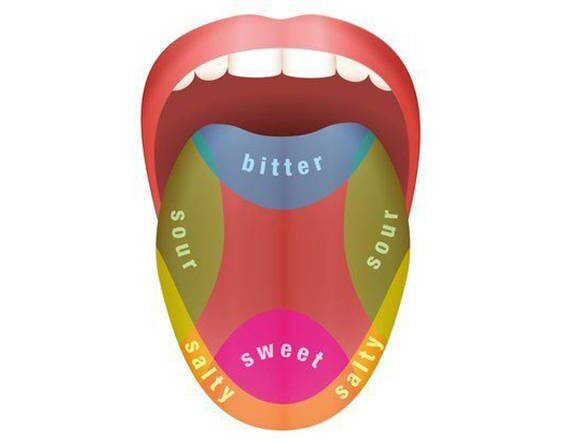When was the last time you heard about the tongue taste map? Whether you came across it during a science class in middle school or while watching T.V show, it is important that you get a clear picture of what it is.
If you are like most people you may have the notion that the taste map shows the flavors that the different parts of the tongue can taste. Studies have shown that isn’t totally correct. What’s surprising is that tongue-taste map pictures in many textbooks are inaccurate.
This article is going to set things straight. Read on to learn how the human tongue really works and how we taste flavors.
What Exactly Are The Taste Buds
A common misconception many people have is that the bumps on our tongues are our taste buds. But that is slightly off. You see, the bumps on our tongue are known as pap-ill-eye. Some of these bumps house our taste buds. (Note that there are taste buds in non-bump areas of our tongue)
The taste buds which are present in some of the bump and non-bump areas of our tongue contain receptors that help us experience different tastes. When food comes in contact with the taste buds they immediately activate each other and send a message to the brain.
The Tongue Taste Map: What Exactly Is Taste?
Knowing a thing or two about taste will go a long way in helping you understand the taste map.
Experts have pointed out that there are five main flavors our tongue can taste. They are as follows.
- Bitter
- Sweet
- Sour
- Salty
- Savory
Our taste bud crates each of these flavors when food comes in contact with them.
The Truth About Some Taste
As mentioned above the tongue can taste five main flavors. Well, if that is the case, you may be wondering how we taste spicy foods. It may surprise you to know that spicy isn’t actually a taste. Researchers have pointed out that the sensation we experience when we eat spicy food is pain.
Spicy foods contain a compound known as capsaicin. When our taste buds come in contact with this compound it detects heat- but the heat is actually pain. This explains why we feel like spicy meals are hot when they aren’t actually hot.
A Close Look At The Taste Map
If you take a look at the tongue map in many science textbooks, you will come to the conclusion that different parts of our tongue can taste different food flavors. But that isn’t the case. The truth is that all the taste buds in our mouths and the roof of our tongues can taste different flavors.
The Sensitive Parts Of The Taste Map
Not all part of the tongue has the same level of sensitivity. The tip of our tongue is way more sensitive than the edge and middle of our tongue. This is why we are able to quickly detect the taste of food and drinks when the tip of our tongue comes in contact with them.
The back of our tongue is equally sensitive but to a certain taste. A study conducted by the National Library of Medicine shows that the back of our tongue is highly sensitive to bitter taste. This enables us to easily detect and spit out spoiled and poisonous foods before they go down our throats.
Final Note
This article has definitely given you a clearer perspective of how our tongue works and detects the flavors of foods. Always remember that the sensation you feel when you eat spicy foods isn’t actually a taste but pain. Regardless of the flavors you prefer, you should make it a habit to brush your tongue with a bamboo toothbrush daily.


